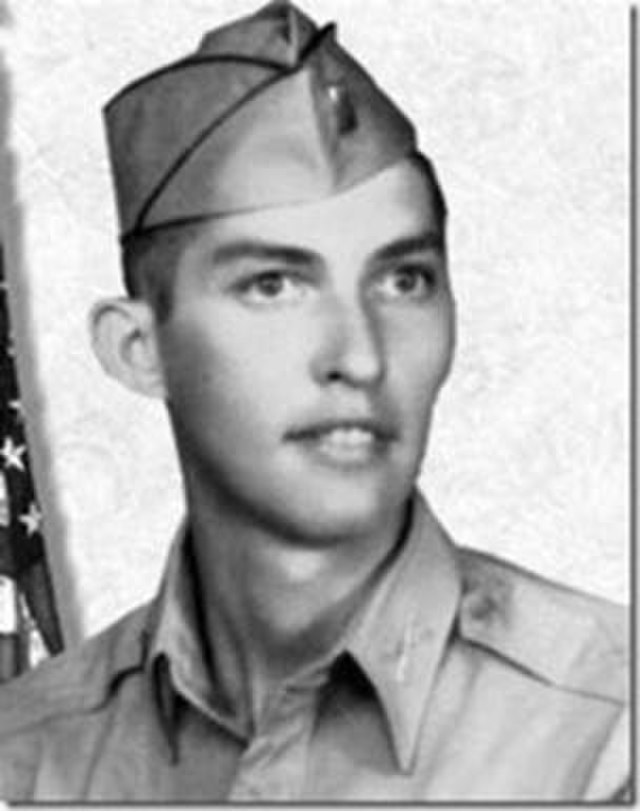by Ty Seidule and Connor Williams
In 2020, a bipartisan act of Congress mandated changing the names of nine military bases previously named for Confederate soldiers. In 2025, Trump bypassed the law to restore the Confederate names.
In A Promise Delivered, Ty Seidule and Connor Williams introduce readers to the 10 American heroes who were chosen by Congress’s Naming Commission to replace the names of military bases named after Confederate soldiers. Read on for a featured excerpt.
Chapter 1
“I Felt This Is What a Soldier Is Supposed to Do”
Van Barfoot’s Frontline Fight
Fort Barfoot (previously Fort Pickett)
The hills and landscape around Blackstone, Virginia, have a way of taking a visitor back in time. Situated about an hour’s drive southwest of Richmond and an hour’s drive southeast of Appomattox, some of the vistas and rolling farm country feel like remnants from a bygone era. Few Virginian places surpass the region in evoking the kinds of agriculture and country living that once dominated the state.
In 1941, army engineers found another use for the region: it had enough ready land and resources to train multiple divisions at once. So they established a camp, springing up 1,400 buildings in a little under a year—many of them iconic white, rectangular, bunks-all-in-a-row barracks. Some of these still remain at the camp, a tribute to the generation of soldiers that trained there. Training soldiers remains the fort’s purpose to this day. Owned by the army but operated by the Virginia National Guard, the installation has a very small complement of permanent soldier and civilian workers. But it hosts units from all different services, all of which use the terrain and ranges to train for all sorts of styles and scenarios of war.
It was originally named Camp Pickett, honoring Confederate general George Pickett, who had grown up on a slave labor plantation about an hour away. Unless entirely swept away by false, romantic visions of the Civil War, soldiers training there could never feel proud of that namesake.
Pickett’s main claim to fame then—and now—was having his name attached to the most disastrous charge of the Civil War, on the last day of Gettysburg. His division suffered more than 50 percent casualties during their two-mile-long assault across open fields. They gained no ground of relevance whatsoever and simply pushed the Confederate “high-water mark” about a meaningless mile further than if they had just stayed in the woods they started in. Stripped of revisionist romanticism, “Pickett’s Charge” remains one of the greatest failures of the entire war. It is the last thing soldiers training for battle should emulate.
The rest of Pickett’s war record fares no better. In 1864, he ordered the execution of twenty-two US prisoners of war and threatened to hang ten more for every Confederate prisoner the United States executed. He was also chronically absent from his division, frequently leaving his men to court and marry a teenager half his age. Indeed, most of the flattering letters, actions, and stories about Pickett have proven to be complete fictions, written by his young widow during her fifty-six years following his death.
Even staunch Confederate supporters should feel no love for Pickett. Assigned to command the defense of the last stronghold protecting Richmond in 1865, Pickett instead left his men and retreated to a lengthy lunchtime “shad bake” several miles away. The United States took the ground—and effectively the Confederate capital—while its defender was eating fish.
But since March 24, 2023, the soldiers training there no longer need to find their faith from fictions. The fort now bears the name of Van Barfoot, a southerner, soldier, Medal of Honor recipient, and longtime Virginian whose career and examples of service, courage, and leadership are as inspiring as they come.

Van Barfoot’s heroism happened when everything hung in the balance. In May 1944, World War II had no conceivable end in sight. From the Pyrenees to the Ukrainian Steppes, Hitler’s Fortress Europe still prevailed. Even while retreating from Stalin’s brutal counterattacks on the eastern front, German armies inflicted gruesome and catastrophic losses: at least ten Eastern European soldiers and civilians died for every soldier lost by the Third Reich.
In the west, German sentries patrolled the cliffs and beaches of Normandy. Northern France, the Low Countries, and Scandinavia still suffered Nazi occupation. Though long-anticipated, the D-Day landings had yet to happen, and their success was far from certain. In Italy, Allied forces fought Nazi units in the chaos of Mussolini’s collapsed state. Romania, Bulgaria, and Hungary fought for the Axis. Partisan warfare engulfed Yugoslavia. From Paris, Vienna, Rome, Athens, Amsterdam. and Copenhagen to Prague, Riga, Warsaw, Sofia, Budapest, and Bucharest, Hitler and his collaborators held every major capital of the Continent.
That spring, the future of the free world would be decided. All throughout Europe, tens of millions of men—most of them foot soldiers—faced off against each other with rifles, combat boots, cunning, and courage. Collectively, they struggled for the future of the Western world. Individually, they focused on the few feet in front of their faces.
Van Barfoot was one of them. He had no long-standing military pedigree. He had no sort of Special Forces training. He had started service as a private. Like most men, his war focused on survival over strategy. And he was about to help make history.
Born into Choctaw heritage in Mississippi; trained in Louisiana, Puerto Rico, and Virginia; and shipped out to the Mediterranean theater of the European War, by May 1944, Technical Sergeant Barfoot found himself in Central Italy, commanding a platoon of about forty men. Rome was barely twenty-six miles away, but the twenty-four-year-old’s marathon of movement had slowed to a cautious crawl.
The unyielding terrain of the Apennine Mountains and the unyielding attacks by fierce German resistance had turned a war characterized by airplanes, tanks, and jeeps into a lethal slog through individual ridges, hills, and houses. Needing to break Germany’s defensive lines in the final fortnight of their push to Rome and hauling their howitzers with pack mules, American infantrymen fought their way through rugged countryside a couple of yards at a time, taking each hill, house, town, depot, and junction as they could.
On May 23, the Third platoon of Company L of the Third Battalion of 157th Infantry Regiment within the Forty-Fifth Infantry Division faced one such scenario. Ahead of them lay a minefield and machine guns guarding a small town. The town needed to be taken, but technology would not help; it would be a battle of the kinds of on-the-ground soldiering skills, sacrifice, and tactical sense that had prevailed since Pericles. Uncertain of the outcome but confident in his training and in his cause, Barfoot volunteered to lead the attack. By the end of the day, Barfoot had secured the area, killed eight enemy soldiers, captured twice that number alive, destroyed a tank, disabled enemy artillery, defended his position, and saved many of his men.
Van Barfoot received the Medal of Honor. But his story is larger than that. It properly starts with how America trained Barfoot and his generation for the steady slog of war, showing how every step in his actions that day represented the steps of so many others. It reminds us that war was more than presidential politics or general’s strategies. For politics are only as powerful as a people’s perseverance, and strategies only as strong as the soldiers’ skills. Leadership stories show us how the war was fought. Barfoot’s story shows us how the war was won.
Start listening to an audio excerpt of A Promise Delivered!
A Promise Delivered. Copyright © 2025 by Ty Seidule and Connor Williams. All rights reserved.

Brigadier General TY SEIDULE, U.S. Army (Retired), is Professor Emeritus of History at the United States Military Academy at West Point and served in the army for more than 35 years. He is the author of Robert E. Lee and Me: A Southerner’s Reckoning with the Myth of Lost Cause and served as Vice Chair for the Naming Commission tasked by Congress to rename Department of Defense assets that honor Confederates. He teaches at Hamilton College.

CONNOR WILLIAMS was Lead Historian for the United States Congress’ Naming Commission. He has taught for Yale University, Middlebury College, the Gilder Lehrman Center for the Study of Slavery, Resistance, and Abolition, and has worked as a public historian and consultant on several other major renaming and reconciliation projects.